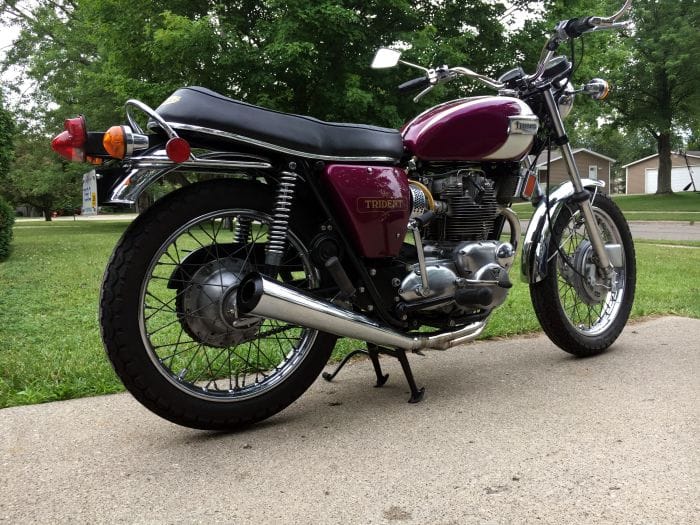![Restored 1972 Triumph Trident [Image: Giles Gaskell]](https://fabbaloo.com/wp-content/uploads/2020/05/image-asset_img_5eb094e031c1a.jpg)
There is another aspect of 3D scanning motorcycle parts that I had not considered: proactive capture.
The story begins with a question from a reader who was puzzled by how to re-engineer a missing part on his classic motorcycle. We answered his question with some thoughts about 3D scanning motorcycle parts. The gist of the story is that while it’s possible to 3D scan and replicate a missing part in some cases, it can be expensive and quite a bit of work to do so.
We were then contacted by Giles Gaskell of Wenzel America, a Michigan-based company that offers a number of related services, including metrology, optical scanning, computed tomography and more. Gaskell explained that he has a similar situation with another classic motorcycle, but his solution provided an interesting twist.
Gaskell suggests using a CT scan (that’s Computed Tomography) for obtaining a high-resolution 3D model of the parts. That’s not something I listed as an option in the previous post, but could certainly do the job. I didn’t list it because few people have access to such technology.
On the other hand, companies like Wenzel apparently offer such a service to the public. Again, I don’t know the prices, and it’s possible they may be considerable.
But that wasn’t the most interesting thing I observed about Gaskell’s motorcycle parts adventure. In his post on the Wenzel site, he explains that on his carefully restored 1972 Triumph Trident, there was one missing part: the tool box. He explains:
“One such part is the tool box which fits snugly behind the left-hand side panel and is a very tight fit. Despite its apparent simplicity it is in fact a very complex part. There is not a single flat surface, no part of it is at right angles to another and the thickness is constantly variable. I cannot believe the part is accurate to its original drawing (if it ever had one) but it works. Does this sound familiar?”
This particular part was not only complex, but is prone to wear, and Gaskell suspected it would wear away and require replacement in the future.
After sourcing an original tool box part, his fear was having it wear out and not being able to replace it. Thus he did something I think few tinkerers do: a proactive 3D scan.
3D Scanning Motorcycle Parts In Advance
He used Wenzel’s CT scanning services, obviously, to develop a very fine 3D scan of the rare part, shown here. This isn’t a replacement part, but by having the 3D model at the ready, Gaskell should be able to have someone make one a lot more easily in the future when it inevitably wears out.
![The Trident tool box [Image: Giles Gaskell]](https://fabbaloo.com/wp-content/uploads/2020/05/Trident-Tool-Box_700a_img_5eb094e0996d7.jpg)
That’s a very valuable step: in your project, identify the rare and complex parts that could wear out and 3D scan them BEFORE they are destroyed or missing. I don’t think this is commonly done, but perhaps there should be more of this happening.
It’s done by some museums to record digitally their works for eternity, but some others have not. 3D scanning museum pieces should be done a lot more often; consider the Brazil National Museum fire.
I’m now thinking individuals should do a lot more 3D scanning on any important items or parts.
Via Wenzel America











